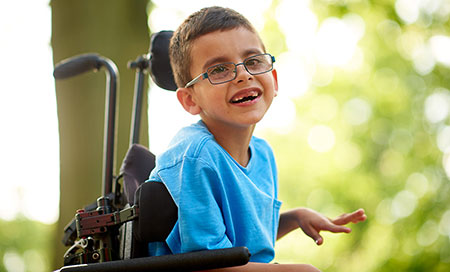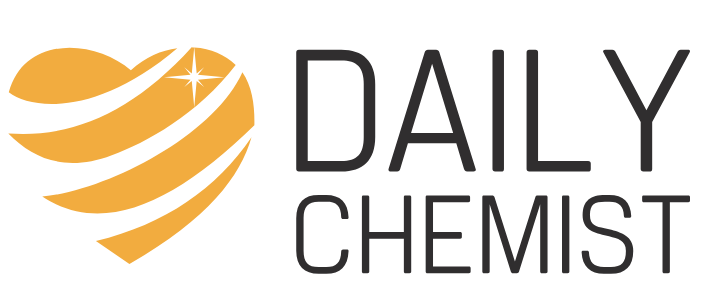The disease defines itself. Cerebral is related to brain and Palsy refers to inability or problem with the muscles. Cerebral Palsy is a collection of disorders that deals with a person’s lack of ability to maintain a proper posture and balance. It is the most ordinary disorder in childhood.

The signs and symptoms of Cerebral Palsy develop during infancy or the schooling years. At a normal mode, Cerebral Palsy results in abnormal posture, trembling walks, abnormal reflexes, stiffness of limbs and trunks, and sometimes, a blend of these abnormalities.
People who are suffering from Cerebral Palsy face unevenness in the working of the eye. In this case, people have trouble focusing on an object. They also face trouble in a variety of motions at many joints of the anatomy because of muscle rigidity.
The signs and symptoms of Cerebral Palsy differ from person to person. Some people face problems in walking, while others can walk conveniently. In some people, normal symptoms occur while in some people, hearing loss or eyesight loss can also be seen.
Symptoms of Cerebral Palsy
The signs and symptoms of Cerebral Palsy can differ from person to person. The synchronization and actions related Cerebral Palsy shows the following symptoms-
- Difficulty in learning
- Deviation in the tone of muscles, either inflexible or flaccid
- Uncontrolled movements
- Seizures
- Speech development problems
- Trouble in motor abilities like closing the buttons of the clothes and holding up the utensils
- Rigid muscles or inflated reflexes (spasticity)
- Rigid muscles and ordinary reflexes (stiffness)
- Slow movements
- Trouble in eating
- Be short of stability and muscle coordination
- Trouble in walking
- Good turn for one side of the body

Causes of Cerebral Palsy
The disorder of Cerebral Palsy is a result of deformity or disturbance in the development of the brain. This disorder is likely to occur when a newborn is delivered. In some of the cases, the reason behind Cerebral Palsy is not identified.
The causes responsible for Cerebral Palsy are as follows-
- Blood loss in the brain in the mother’s womb or when newly born
- Distressing injury in the head while an accident or falling down
- Mutations in the genes

- Fetal stroke, an interruption in the supply of blood to the embryonic brain
- Be short of oxygen to the developing brain because of difficult delivery
- Infection in mother that have an effect on the Fetus
- Infection in the infant that leads to tenderness in and near the brain
What are the Preventive Steps?
Most of the cases of Cerebral Palsy cannot be prevented. However, you can take preventive steps to diminish the risk and stay away from the risk factors. If you are bearing a child or planning to get pregnant, you should prevent yourself and your future child.
The preventions are as follows-
-
Get a vaccination
Getting vaccinations for the diseases, which can harm your fetus’s brain, can be helpful in preventing your would-be child. It is suggested to take this vaccination before getting pregnant.
-
Think about yourself
The healthier you are, the more chances will diminish to have an infection before and after pregnancy, that can afflict your fetus from Cerebral Palsy.
-
Prenatal care

Visit your doctor before and during your pregnancy. The doctor’s check-ups will reduce the chances of getting infections or afflictions to the unborn child.
-
Prevent your child from injuries
Prevent your newborn child from injuries, especially head and limb damages. Keep away the harming items like an iron nail, bike helmets, or other things that can afflict your child’s weak and soft tissues.
-
Stay from alcohol, smoking, and prohibited drugs
The intake of alcohol, smoke, and unlawful drugs can accelerate the chances of Cerebral Palsy in your unborn baby.
Diagnosis of Cerebral Palsy
The symptoms and Cerebral Palsy can become visible over time, so it becomes important to diagnose your child if you suspect that he/she is suffering from Cerebral Palsy.

Your doctor may have an effective eye to your child’s actions, mental development, reflexes, and movements. After observing the prearranged aspects, he may go for a physical test. Your doctor might recommend you to a child’s specialist who is well trained in treating the brain and limb associated issues in children.
Your doctor can also conduct a sequence of tests to draw a diagnosis and dig out other possible causes for Cerebral Palsy.
Brain Scans
Brain-imaging practices can reflect the hidden areas of damage and irregular development of the brain. These practices include-
-
MRI
MRI refers to magnetic resonance imaging.

This practice employs radio waves to bring in the in depth images of your child’s brain where the abnormality is present. MRI is painless but a bit loud.
-
Cranial ultrasound
Cranial ultrasound is performed during infancy. It employs high-frequency echo waves to generate images of the brain. However, it does not produce thorough images, but it is low-cost and generates enough clear images to have a look at preliminary consideration.
Electroencephalogram (EEG)
An electroencephalogram is a test conducted if your child experiences seizures. It is done while attaching a chain of electrodes on your child’s scalp.

An electroencephalogram can detect epilepsy in your child.
Laboratory Test
Laboratory tests based on urine, blood, and skin are conducted to detect metabolic and genetic problems in your child.
Additional Test
The specialist to whom your doctor has recommended your child generally performs additional tests. These tests are conducted to detect if other causes are responsible for Cerebral Palsy in your child. These tests can recognize issues related with-
- Speech
- Development
- Hearing
- Movement
- Intellect
- Vision
The treatment of Cerebral Palsy for children and adults need lasting medications, care and a team of therapist and specialists that take care and help the patient to be cured.
Medications
The medications, which can decrease muscle stiffness, recover your functional abilities, cure pain, and handle the complications of Cerebral Palsy.
-
Muscle or nerve injections
Your doctor may suggest you injections of Dysport and Botox to decrease and cure the stiffness of the muscles. Your child may need these injections every three months.
The possible side effects of these injections can be flu-like symptoms and pain in the injection situate. Other severe symptoms of these injections can be a problem in swallowing and breathing.
- Oral Muscle relaxants
Your doctor may suggest oral drugs to calm down your muscles. Drugs like Diazepam (Valium), Dantrolene (Dantrium), Baclofen (Lioresal, Gablofen) Tizanidine (Zanaflex) can help relax your muscles and make the patient relief.
These drugs create dependence over the patient, so it is recommended not to use them for a long period. The possible side effects of these medications can be liver damage, sleepiness, and issues with blood pressure.
Therapies
Numerous therapies can play an essential role in the treatment of Cerebral Palsy. Some of these are as follows-
-
Physical Therapy
Physical therapy deals with providing muscle training and helps the patients in performing exercises.

These practices help in strengthening the muscles and improving the actions related to movements, flexibility motor abilities.
-
Occupational Therapy
Occupational therapy emphasizes on bringing independence in the daily actions and activities.

Quadrupedal canes, electric wheelchairs, Walkers, and seating systems help the patients especially the children to achieve independence in doing their daily activities.
-
Speech Therapy
The therapists help and make the children suffering from Cerebral Palsy exercise to speak clear and sound.

As Cerebral Palsy affects the speech of the patients, this therapy attempts to treat speaking or language disorders.
-
Recreational Therapy
Some children recover through sports activities.

Recreational therapy as a treatment of Cerebral Palsy helps the patients to improve their speech, emotions, and motor abilities through recreational and competitive sports activities like skiing or horseback riding.
Surgical Operations
Sometimes, surgical operations are required to cut down the stiffness of muscles and correct bone deformities. The surgical procedures are as follows-
-
Orthopedic Surgery
Children with serious abnormalities require orthopedic surgery to locate their hips, arms, and legs at the accurate and correct positions.
The joints, which are, shortened by deformities, can lengthen by this surgery. This recovers the mobility and muscle stiffness and pain in the patient. It also makes it easier to use crutches or walkers.
-
Cutting down the nerve fibers
In some very serious cases, when other treatment of Cerebral Palsy does not work,Then surgeons cut the down the nerves that are serving the spastic muscles in a process called selective dorsal rhizotomy.
This brings relaxation to the muscles and also reduces the pain, but it can result in a lack of sensation.
For online doctor consultation regarding Cerebral Palsy, visit the Daily Chemist web page and also get medical guidance from experts.

